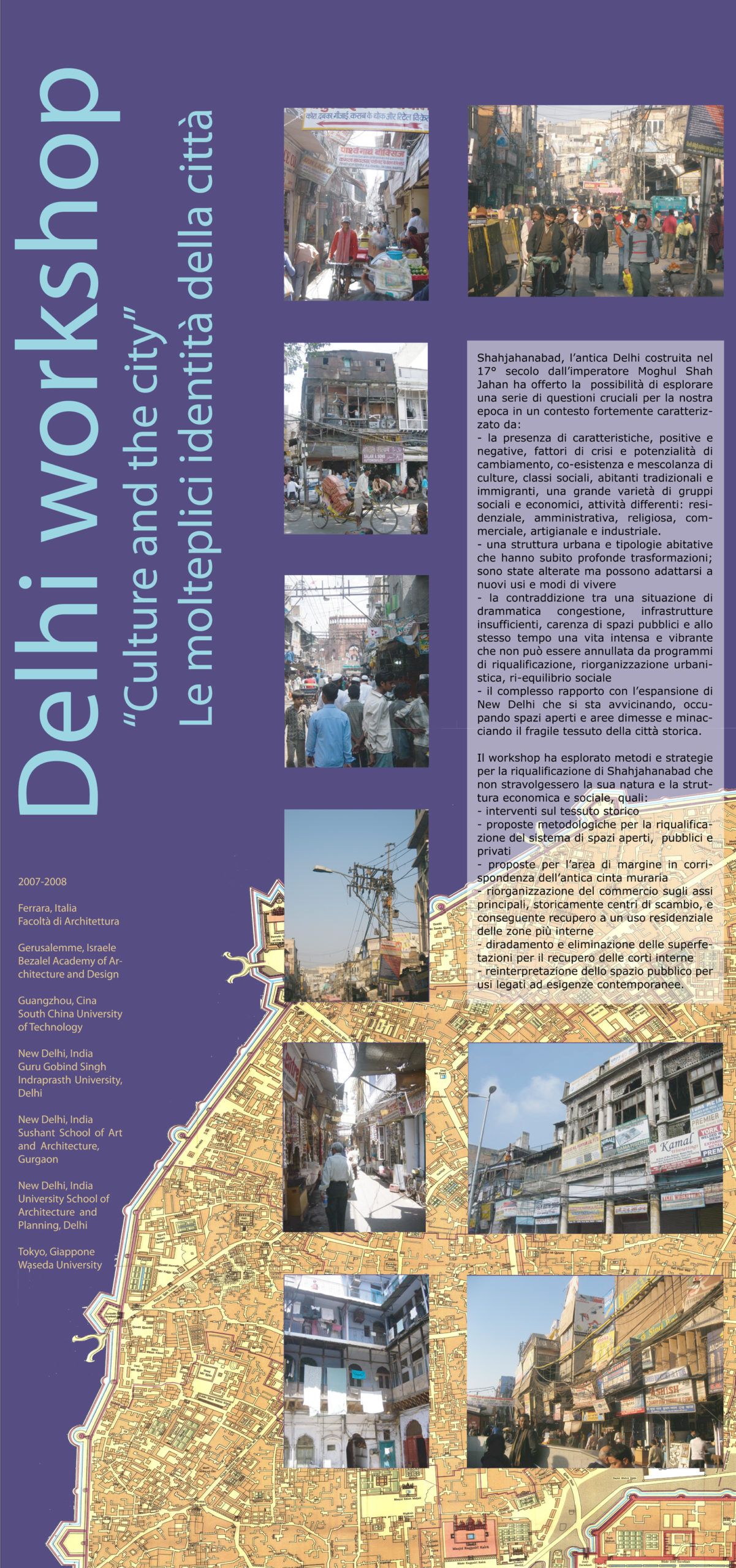Delhi
/ April 6, 2008
Culture and the city’s multiple identity
The workshop explored methods and strategies for the upgrading of Shahjahanabad that would not disrupt its nature and social structure
Shahjahanabad, the ancient Delhi built in the 17th century by the Moghul em- peror Shah Jahan, offered the opportu- nity to explore a set of issues that are crucial for our times in a context stron- gly characterised by:
- the presence of positive and also negative features, elements of crisis and potential for change, co-existence and mix of cultures, social classes, traditional inhabitants and immigrants, a great variety of social and economic groups, different kinds of activities: residential, administrative, religious, commercial, traditional and industril
- an urban structure and building typologies that have undergone deep transformation; have been altered but can yet adapt to new uses and lifestyles
- the contradiction between a situation of dramatic congestion, inadequate infrastructure, lack of public spaces and at the same time an intense and vibrant life that cannot be wiped out by programs of re-qualification, urban re- organisation, social re-equilibrium.
- the complex relationship with the ex- pansion of New Delhi that is growing closer, occupying open spaces and abandoned areas, threatening the fra- gile fabric of the historic city.
The workshop explored methods and strategies for the upgrading of Shahjahanabad that would not disrupt its nature and social structure:
- interventions on the historic fabric
- methodological proposals for the re- qualifying of the system of public and private open spaces
- proposals for the peripheral areas where the old city walls used to be
- reorganisation of the commercial ac tivities along the main axes
- historical places for exchange – and consequent re-use of the internal areas for residential use
- re-interpretation of the public space for contemporary uses.
The Laboratory was organised in co-operation with: Delhi Development Authority, INTACH (Indian National Trust for Arts and Cultural Heritage), TVB School of Habitat Studies, New Delhi School of Planning and Architecture

